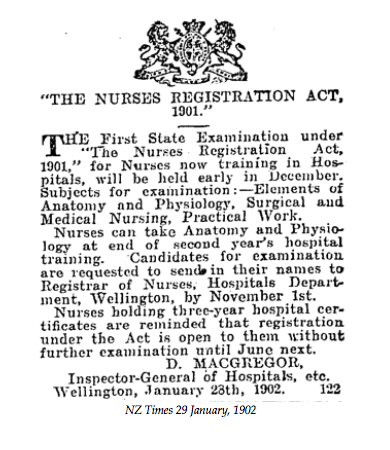Along with the departure of Mrs Bernard Moore and Dr Hammond, the eight certificated nurses left the hospital although one of these was soon re-employed. There was no shortage of applicants to fill the nursing vacancies. The system of educating the nurses began by Mrs Moore continued with instruction in nursing techniques from successive Matrons. It is noteworthy that, apart from Mrs Mary Kissling (Lady Superintendent 1884-1885) and the controversial Kate Marsden (Lady Superintendent April – September 1885), all Matrons for the remainder of the century received their basic nurse training at Wellington Hospital. This was a factor in ensuring that consistency in the training of nurses was preserved.
As early as June 1884, Dr Grabham, the Government Inspector of Hospitals reported:
“A very excellent system of nursing is in full operation at the Wellington and Auckland Hospitals, where well-educated ladies may be seen serving their apprenticeship with other ‘probationers’. Trained nurses from these two schools will gradually become distributed in various parts of the colony….”
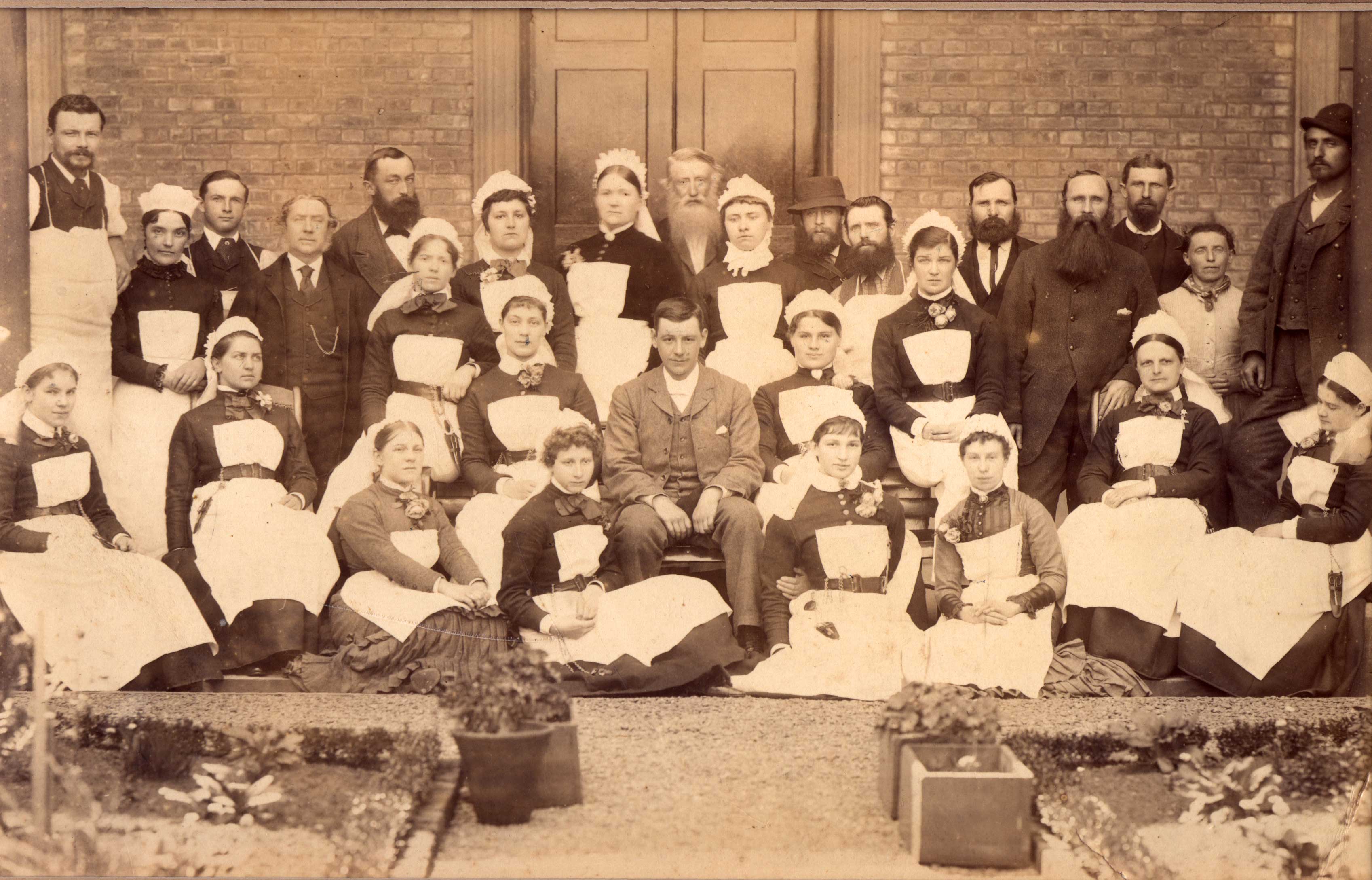 The Hospital staff in 1884
The Hospital staff in 1884
Back row (L->R): Mr Cameron (Cook); Mr Jones (Assistant Cook); Mr C E Dudley (Steward); Nurse E C A Hughes; Mr Cass (Gardener); Mr J Wyman (Messenger); Mr Thompson (Carpenter); Mr Brown (Attendant); Mr Peloni (?role); Mr Carline (Ambulance Driver)
Middle row: Miss Roulston (House Maid); Mt Reynolds (Porter); Nurses Jenner and Gunn; Mary Kissling (Lady Superintendent; Nurse M E Sheehy (Dispenser); Nurses Foden and H Gillard; Herman Hermansen (Dresser); Nurse M Hope
Front row: Nurses A Paynter and L Weston; Miss Aston (House Maid); Nurse A E Finch; Dr Chilton (Surgical Superintendent); Nurse Emmett; Miss Jones (House Maid); Nurse Elizabeth Hermansen
In January 1888, the 1887 Annual Report of the hospital’s Resident Medical Officer was presented by the incumbent, Dr Hassell.
He reported “During the year a course of about 40 lectures on ‘Elementary Anatomy’ and on ‘Nursing’ were delivered to the nurses, of whom seven are entitled to certificates by examination. Dr Kemp very kindly assisted in the examinations.”
Elementary Physiology was soon added to the lecture syllabus.
During the 1880s the duration of the training was one year, but by 1896 had increased to two courses of eighteen months each. With the longer period of study came two sets of examinations (‘junior’ and ‘senior’) in anatomy and physiology, and in nursing.
From the 1890s, Dr Ewart examined the junior class, and Dr George Anson examined the seniors. From 1900 he was assisted in this by Dr A Temple Perkins.
From 1900 an additional examination was added – the Hospital Final Exam taken at the end of the three-year course. Certificates were awarded to those who passed this examination.
The Wellington Hospital School of Nursing was firmly established and its excellence well-known nationally. In the 1890s, training in the skills and disciplines of nursing were overseen by Matron Augusta Godfrey (1890-1898), and for the continued delivery of high-quality lectures in anatomy and physiology during this period, credit goes to Dr John Ewart, Surgical Superintendent (1889 – 1909).
In July 1901 Dr MacGregor, the Inspector of Hospitals reported on Wellington Hospital:
“The nursing staff is thoroughly efficient, and owes much to the very careful training and teaching of Dr Ewart and Miss Payne.”
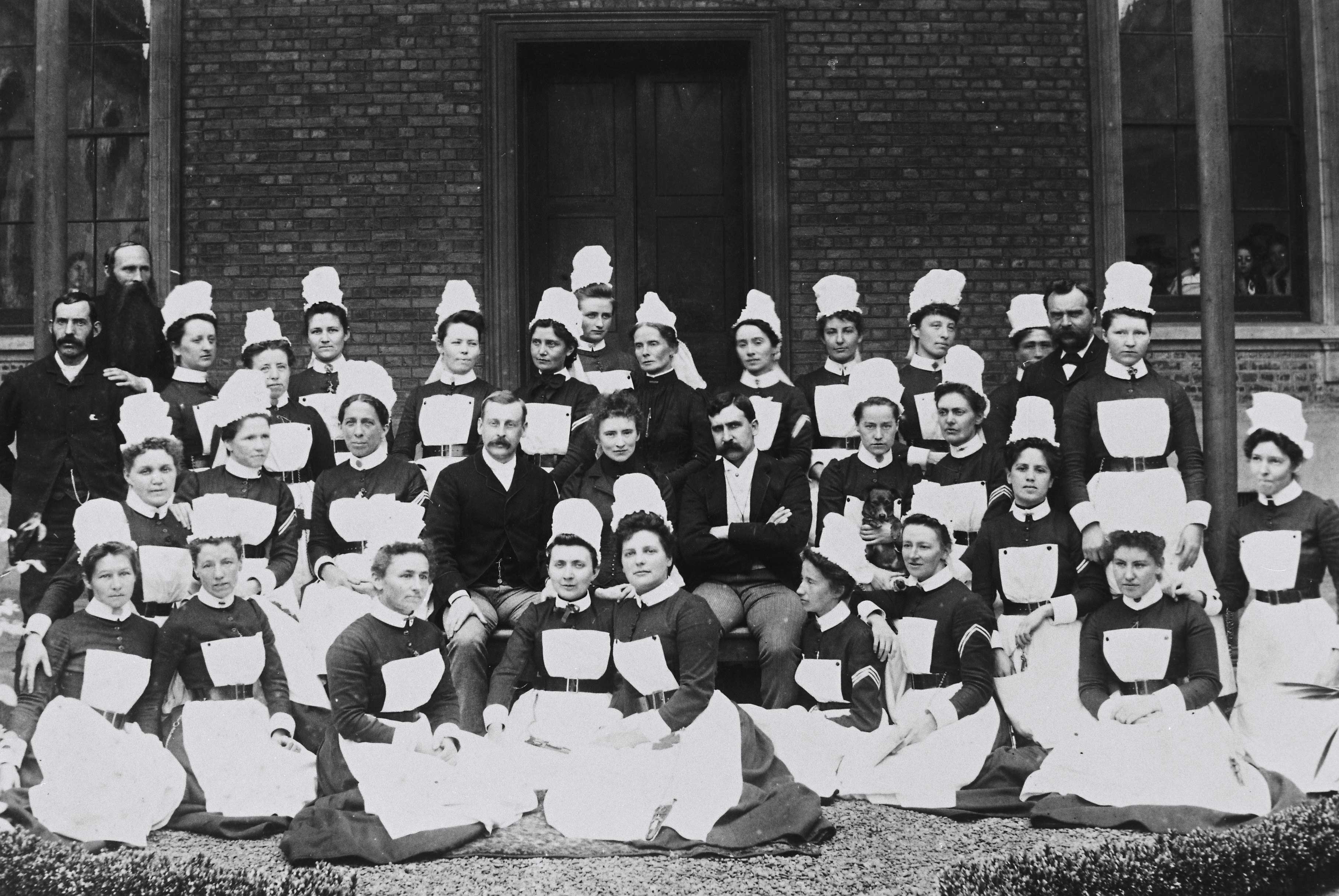
1891 Staff photograph
Back Row (L->R): Mr Toner (?role); Herman Hermansen (Dresser); Nurses Margaret E Brown, Mrs Odel, Roberts, Matilda Hunt, Stevenson, Eleanor M Tasker; Augusta Godfrey (Matron); Nurses Playle, Farmer, Frances K Payne, Frances Chiene; Mr Rountree (Steward); Nurse Agnes Kerr
Sitting: Nurses Mildred G Rees, Mason, Ellen Dougherty; Dr John Ewart (Medical Superintendent); Mrs Grace Ewart; Dr Albert Martin; Nurse Laura Heath (Dispenser); Nurse Richardson
Front row: Nurses Emily Rowley, Helena Willis, Snodgrass, Childs, Eva Nelmes, Lilian Heath, Beetham, Rutherford, A R Cecelia Bagge, Elizabeth Anketell
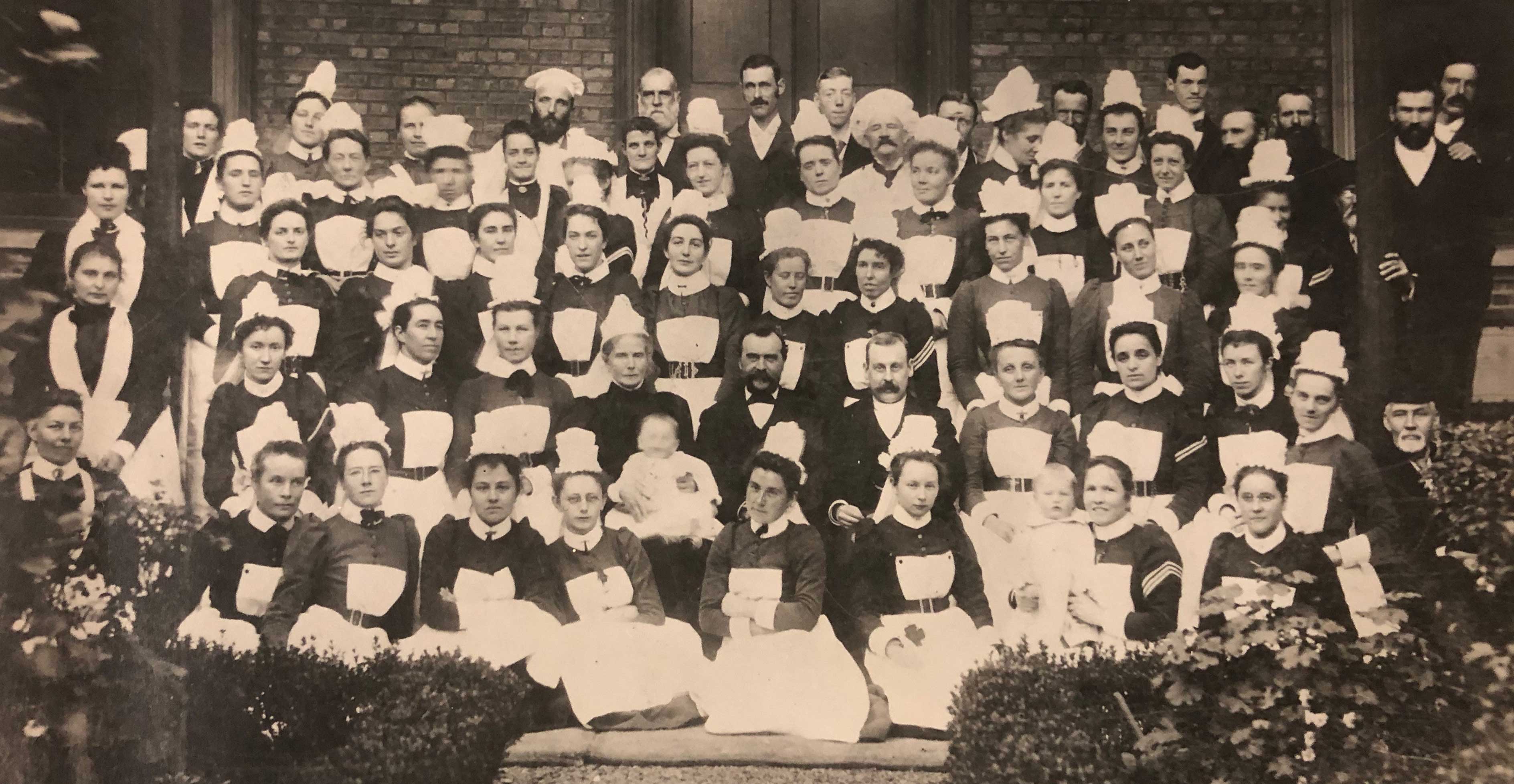
1897 staff photograph
By the mid 1890s it had become increasingly apparent that the high standards of training nurses at Wellington Hospital were not shared at many of the other hospitals in the country, especially those outside the main cities. Dr MacGregor, assisted by Mrs Grace Neill, 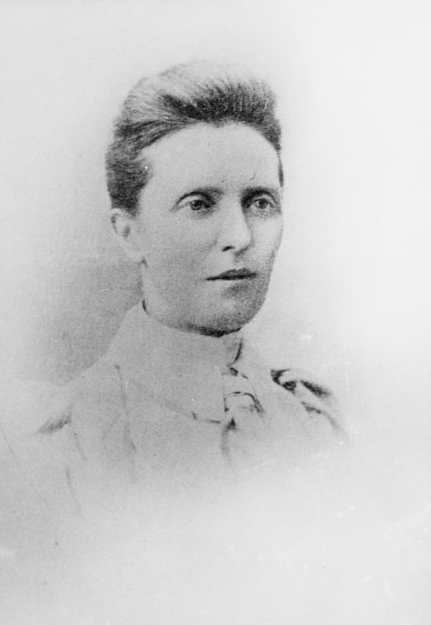
the Assistant Inspector of Hospitals highlighted these differences, and this led to the formulation of legislation designed to improve standards of training nationally and to establish a register of trained nurses. Thus the Nurses Registration Act 1901 came into being. Advertisements advising trainees of the first ‘State Examinations’ were widely published in early 1902.
